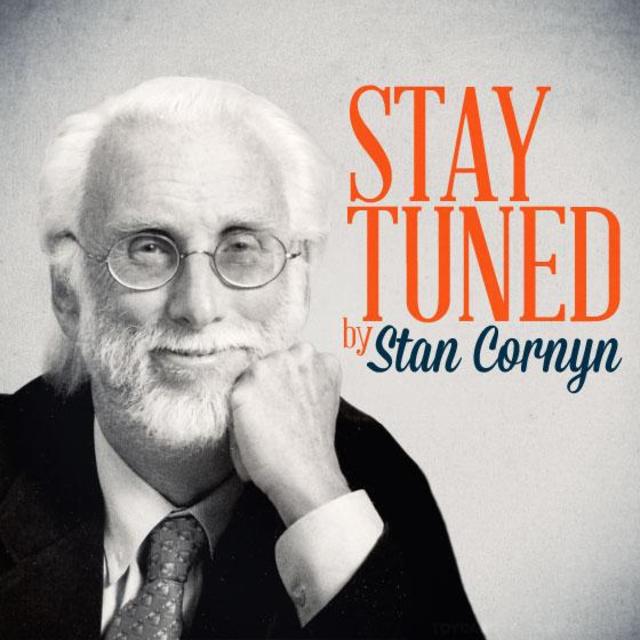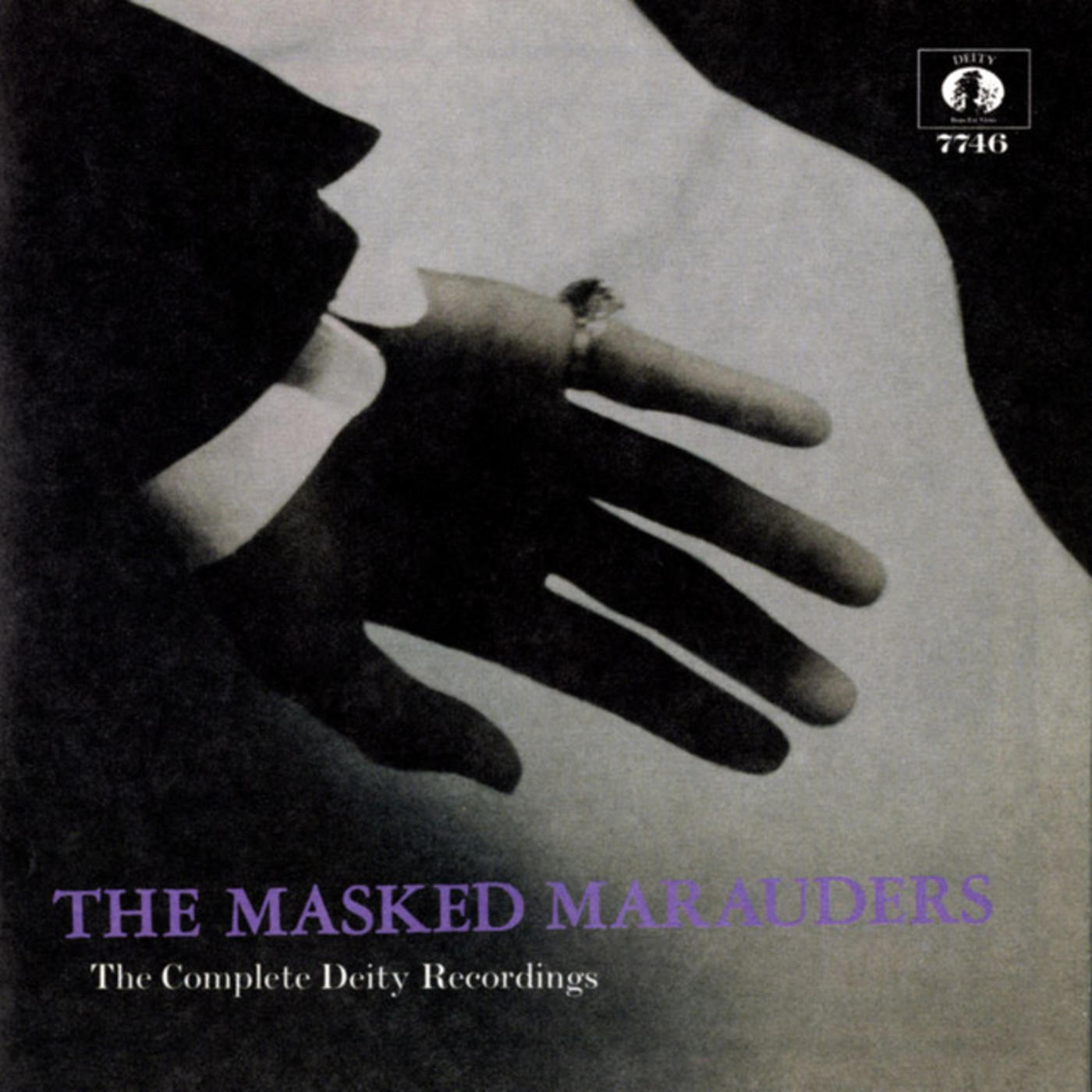Stay Tuned By Stan Cornyn: WEA’re Number #1

Every Tuesday and Thursday, former Warner Bros. Records executive and industry insider Stan Cornyn ruminates on the past, present, and future of the music business.
Outrageousness Sells
With the birth of WEA branches, and sales soaring, WCI’s three-label combo took off. Took off in sales, off its clothes, off budget restraints, and forget about “dignity.” Time to party, and that WEA people did. It all got attention, and attention got even more sales.
1971 was a year to remember. WEA got to be #1 in the whole market.
One highlight of that year or era was the Stones' zipper cover. But first, underwear had come, and that came from Alice Cooper.
Paper Panties
Warner/Reprise had moved from the Sinatra years, and even the Laurel Canyon years, and had signed acts ranging from The Fugs to Alice Cooper.
Alice in particular meant a good time, with something soon-to-be known as "Shock Rock." Alice once confessed to the press: “The thing that really turned it all around for us was when we realized that we were not into Peace and Love. We were the National Enquirer of rock & roll.”
Alice became loved by WBR/Reprise’s middle class employees. He wore makeup. Good. But what started his biggest moment of admiration was his appearance at the Toronto Peace Festival, when somebody in the audience threw a live chicken on stage. Alice knew how to handle it. Chickens have wings, don’t they? He threw the chicken back into the audience. The chicken did not fly. Smack. Blood everywhere. Dead hen.
The next day, the papers say “Alice Cooper rips chicken’s head off, drinks blood.”
Cooper’s manager, Shep Gordon, decided that the innersleeve for Alice’s next album, School’s Out, should be not the convention paper sleeve. It should replaced, and around that 12” vinyl disc should stretch ladies’ disposable paper panties. Pink ones.
At first, Reprise resisted (expensive; flammable), though privately we rejoiced at the idea. But where to get enough panties? We ordered them from Europe, but when they got stopped at U.S. Customs, the order did not look right, with paper panties going to a pressing plant. Our PR man spoke our tactic, and a reporter interviewed Customs asking, “This is the same material that’s used in surgical garments, right?” “Correct,” he answered. “So if you put these panties over your head and face, they would be okay?”
Meanwhile, Shep snuck carloads of pink paper panties in to our U.S. record pressers via Canada. Mo Ostin seemed relieved. His Creative staff had done it again!
Zippers
At Atlantic Records, for its new coupe Rolling Stones Records, hipness was more out-sourced, ‘tho often by Ahmet Ertegun, now super-close to Mick Jagger with Atlantic’s hot new act. First Stones album out was named Sticky Fingers. The cover image was a close up of a man in jeans with an obviously major penis right behind the zipper. And you could unzip the zipper. Unzip and out from inside the pants would pop a red balloon. The creator of this was pop artist Andy Warhol (who for this design got perhaps the largest “cover fee” of any album ever: $30,000).
The penis model was actor Joe Dallesandro, it’s alleged. But after the first 50,000 copies, Atlantic had to pull in its cover. On the original pressings, the zipper on the cover was for real, but commercially, it didn’t work. The zipper gizmo was damaging the vinyl when the albums got stacked for shipment. For a while, the albums were shipped with the zipper down half-mast. Then, the art refocused on the band’s new logo, the tongue-and-lips.
Either way, the Rolling Stone group had partied up with Atlantic to do something outrageous, even by the 1960s standards of Free Love. And the album, the Stones’ first for its decade at Atlantic, had a big single, “Brown Sugar,” which sold, zipper up or down.
Dove Banging
1971 meant party time for WEA branches. The share-of-market stats in Billboard had proved WEA was #1 of the big conglomerates, out-selling Columbia and those others.
In no city did parties become more frantic than San Francisco, where the Los Angeles Branch had a separate office for the Bay Area’s promotion and sales staff.
To open their new offices in S.F., a genteel party for about 50 guests was organized. Guest of Honor was Liberace (now on WBR). The party got bigger than fifty; 500 guests showed up, with radio and TV coverage. Out of hand?
The next day, the building owner sent a letter to the Warner Records staff there:
Gentlemen:
The party has prompted some problems which I must call to your attention:
and went on, listing issues, including:
4. The behavior of some of your guests was unfortunately adverse to the standards we must maintain in the building. Specifically, there was sexual intercourse in at least one instance in one area of the corridor . . .
Foremost of the partiers in San Francisco was Warner’s wildest promo man, Pete Marino. He’d been there for WBR for years, remembered for his nude walk out of the ocean, through the hotel lobby, passing through the conventioneers, in Hawaii. That was years ago now, but Marino still knew how to get attention.
At the opening party, Marino and Liberace tried to out-jewel one another, bauble for bauble, ring for ring.
When a new rock group on Warner-distributed Capricorn Records, a glam rock band called White Witch, had its first LP out (Rolling Stone gave it one star out of five), Marino felt the urge again. He contacted Daphne’s Funeral Home in San Francisco to house a coming-out party. Food and drinks were served out of caskets. Five hundred more people showed up, mixing with maybe two dozen genuine mourners.
To fetch the crowd, the afternoon before the evening party, Pete Marino had purchased two dozen white doves to release from the top of the building. Time to open the casket and … oops, all the doves had had their wings clipped. Disoriented from hours inside the coffin, unable to fly, the birds plopped out and onto the street below, getting run over by cars, stomped on by pedestrians.
The City of SF sent WEA a bill for care and boarding the ailing doves. Marino barged back into City Hall, waving the bill, demanding “Where the hell did you keep them for that kind of money? The Fairmont Hotel?”
Then Marino raced back to his office. He had a promo idea for an album he heard was coming out soon on Reprise: Randy Newman’s Sail Away. For Sail, Marino and his boss arranged for 2000 wooden airplanes to be launched off the roof of local FM station, KSAN. Downtown. At noon. They sailed, and SF officials applauded WEA’s change from live doves to balsa wood.
Surge in Hotel Room Destruction
With the imbalance in artist rosters – heavy rock vs. middle-of-the-road, the count on how many hotel rooms got blasted by visiting bands hit a new high. Without divulging which became naughtiest in hotel room debauching, the WEA list of 1971 touring bands now included:
Led Zeppelin, Bee Gees, Emerson, Lake & Palmer, Traffic, The Doors, Black Sabbath, Alice Cooper, Faces, Grateful Dead, Little Feat, Fleetwood Mac, Jimi Hendrix, The Rolling Stones, and T-Rex.
Of these groups, Led Zeppelin had the bawdiest reputation, although it did not lead in WEA’s Destructo chart. The Zep was renowned for tossing TV sets out hotel windows, but is best remembered for a night in Los Angeles’ Continental Hyatt House where the group rented an entire floor for its playground. There, the group’s tour manager brought in a pair of motorcycles up to “their floor” so the group could do Indoor Racing.
That same hotel, which got to be known as the Continental Riot House, had previously experienced Keith Richards of the Stones flinging a TV out of a 10th story window.
It got to be like you weren’t a true rocker ‘til you tossed a TV set out of a hotel room.
Cow Pie
In 1969, Rolling Stone magazine’s writer Greil Marcus, using the pseudonym T.M. Christian, fell into exasperation over all those “super-groups” he reviewed. Marcus one day wrote a review of Diety Records’ new album by a super-group that had named itself The Masked Marauders, masked because its members were largely tied to record contracts elsewhere.
They’d recorded this album in secret, up near Canada’s Hudson Bay Colony, with songs by and sung by unlisted Marauders members Bob Dylan, Mick Jagger, John Lennon, Paul McCartney, and an unidentified drummer.
Songs, often adaptations plus a few originals, included Mick Jagger doing “I Can’t Get No Nookie” (reviewed as “an instant classic”) and “Cow Pie.”
Airplay from tapes began in L.A. and S.F. Rolling Stone, which created a major first review of Diety’s session, got calls from its readers begging the answer to “where can I…” But the album was not out. Artist managers – the Beatles’ Allen Klein and Bob Dylan’s Al Grossman - called Rolling Stone, asking, too.
Soon, WBR got a call from Rolling Stone’s Marcus wondering if our label would release the album, since Diety couldn’t. We talked it through, and decided it’d be worth a chance. I called my boss, Mo Ostin, asking if we could offer $15,000 for the rights from Diety. Mo was at lunch, and just quickly answered, “Stan, for that kind of money, don’t even ask. Just do it.”
WBR made the deal, but it took a while for the masters to get delivered; they were still working on the original recording. Finally, it came in.
Warner’s Art Department came up with a Masked Marauders cover on behalf of Diety: a black-and-white photo based on a movie moment that Warners’ art director/photographer Ed Thrasher thought fitting:
Diety Records’ Masked Marauders
(Warner based this image for Diety’s cover from a movie scene from the movie Fearless Vampire Killers [1967], which had starred Sharon Tate, a beauty later killed by the Charles Manson gang.)
The Masked Marauders album release was greeted well by the record industry. This was, after all, 1971. Industry trade magazines made it their “Pick Hit.” WBR quickly ran its own trade ad, headlined “DO NOT BE FOOLED BY OTHER MASKED MARAUDERS.” The ad didn’t really name names, but said the “other” source was “a certain large record company, one with seven letters in its name, which begins with the third letter of the alphabet and ends with the twelfth letter of the alphabet.”
For Diety/Reprise, the Masked Marauders album eventually ended up selling 90,000 copies. Naughty we.
(Four decades later, NBC’s Brian Williams would broadcast a 10-minute story about The Masked Marauders, which some people still refer to as “a hoax.” To watch it, click HERE.)
1971 Should Never Stop
Getting to be the #1 label in 1971 felt, oh I dunno, felt like we’d won some election ballot for “Best Show Offs.” Felt like top-of-the-heap, ahead of the lame brains. At WEA, its labels were way out in front in magazine articles, party invites, and left-behind competitors who felt awe over the Warner group.
And at WEA, the fun had just begun.
For at least ten more years, madness and money mixed.
-- Stay Tuned


